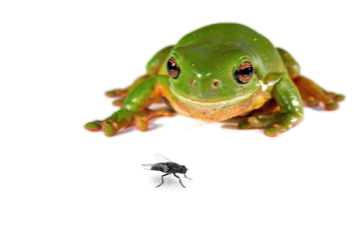
Herping for reptiles and amphibians is a hugely entertaining pastime, but there are certain tools and equipment that will make it even more rewarding. Plus, being adequately prepared will make you a more effective herper, which means observing more lizards, snakes, turtles, frogs, salamanders, or whatever else you're chasing.
Let's not forget that some of us live in areas with potentially dangerous reptiles such as Rattlesnakes, Coral snakes, Cottonmouths, Copperheads, Gila monsters, and more. Don't put yourself at risk unnecessarily by ignoring common sense safety precautions while herping.
Below is a list of herping tools and equipment that I've compiled based upon years of herping experience. I've grouped the items into must-haves, and nice-to-haves.
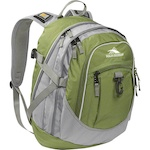
A small backpack is a comfortable, affordable, and convenient way to carry around all your herping equipment. I use a High Sierra backpack, and it has served me well, but there are many brands from which to choose. Several compartments and pockets is ideal, and makes organizing your tools much easier. Avoid backpacks with laptop dividers. Oh, and please avoid fanny packs—you're an adult now.
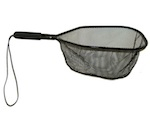
Herping a pond or swamp for frogs, salamanders, newts, or tadpoles is much easier if you have a small hand net. This way, you can slowly and efficiently sweep the shoreline waters for amphibians. Rubber netting is ideal, as it doesn't rot and is easier to clean. This is arguably the most awkward herping tool to carry, but can be clipped or tied to your backpack for easier transport. Oblong net frames, such as the one pictured to the left, are generally more effective as you can reach deeper into the water with one sweep. Also, the netting should be shallow, rather than deep, as you want to be able to easily and quickly scan the contents of the net.

A snake hook is an absolutely invaluable herping tool if you have any interest in handling or photographing snakes. There is a wide array of sizes and lengths available, including reliable collapsible versions for easier transportation. Don't purchase anything shorter than 36" if you're going to be dealing with venomous snakes.
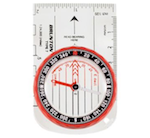
If you're going to be herping deep within forests or for miles across fields and hills, where landmarks won't really help establish direction, you really should have a compass. If you rely solely upon electronic gadgets for guidance, you can be certain that they will fail you eventually. A compass never fails—not even in the Bermuda Triangle. Regardless, it's important to be able to navigate using one of these classic tools. Plus, using GPS to guide yourself to herping spots just seems like overkill. Come on, this is nature. If you don't know how a compass works, you should learn.
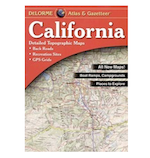
A detailed topographical map will show campgrounds, trails, scenic routes, elevation, bodies of water, and more. Not to mention, a compass becomes even more useful when you can align it with a map.
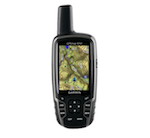
I don't deplore GPS, I think it's great technology that comes in handy when I'm trying to navigate to a hotel in Paris. Will you ever catch me walking through the woods with my eyes glued to a GPS screen? Nope. Not my cup of tea, but to each his own. However, GPS is invaluable for setting herping waypoints, especially for reptile or amphibian surveys. If you have the means, I recommend bringing a compass and a GPS device. Some of them even have two-way radios so that you can coordinate with another herper in the field. Again, seems like technology overload to me, but some may find it useful.
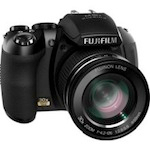
Every herper needs a digital camera to record the different reptile and amphibian species encountered while herping. After all, you never know when you're going to come across a lifer. Spend a few dollars and get a decent one. In my opinion, the most important factor is a good optical (not digital) zoom. Get one with at least 20x, but preferably higher. They seem to all have high megapixels nowadays. $400 can actually get you a digital camera that will work great for herping. I personally have a Fuji with a 30x optical zoom, and couldn't be happier (I actually prefer it to the Canon EOS XTi I had been using previously). All my herping videos are taken with my iPhone 4 (in HD).
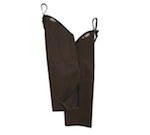
If you do your herping in an area with venomous reptiles such as Rattlesnakes, make sure you wear a pair of snake-proof gaiters. If you don't, you're asking for trouble, and it's trouble you don't want. They are quickly and easily attached over your lower pant legs. As the name suggests, snakes cannot pierce the material, which spans from your ankles to your knees—the snake strike range. You can buy snake proof pants too, but they don't seem necessary and are usually quite expensive.
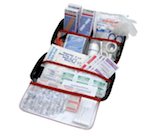
It really should go without saying that you should have a first aid kit with you while herping. You're bound to get a few nicks and scrapes, not to mention the occasional bite or sting. Snake bite kits are a gimmick, so please don't waste your money.
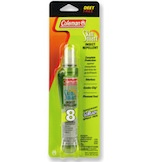
If you do your herping in the desert, you may not need this, but if you're looking for frogs and salamanders around ponds and swamps, this is an absolute must to avoid mosquitos, gnats, and ticks. I use a natural DEET-free brand from Coleman, which comes in a small cylindrical spray bottle and lasts around eight hours. Believe it or not, Avon Skin So Soft bug repellant is excellent as well—there have been times when it has gotten the job done when nothing else would, especially down in Florida.
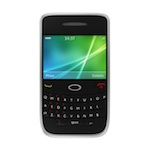
Even if you don't think you'll have cell phone coverage where you're going to be herping, bring your phone. This is a no-brainer. Not only is it a safety measure, it's useful too. My iPhone 4, for example, has GPS for marking waypoints, a map program where I can see satellite imagery of the surrounding topography (ponds, swamps, roads), an HD video camera, a sound recorder (for frog calls), and a notepad program that I use frequently.
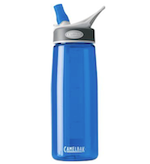
You'd be surprised how easy it is to forget about water. If you're going to be herping for a few hours, make sure you bring some. In arid climates, your sweat dries so quickly that you don't realize how much water you're losing. Staying hydrated means you'll have more energy to search for all those reptiles and amphibians for longer periods of time.
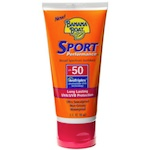
It's easy to forget about sunscreen, but don't. Get a long-lasting SPF 50 and put your mind at ease.
Ok, that about covers the herping equipment and tools you really
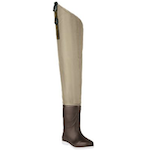
Sure they're bulky, but waders can really get you close to the action. As a kid, I used to wade into a nearby lake with my friend and net Painted turtles—they seem to be less wary of you when you're actually in the water with them. It's really important you don't disrupt the habitat while using them, so do so carefully and observe all local regulations. I don't use waist or chest waders as there's no advantage to going that deep into the water.
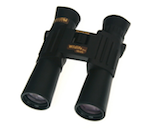
One common mistake new herpers make is not looking far enough ahead while walking, but instead focusing on the ground directly around them. A good set of binocs allow you to scope out a herping territory well before you alert all the inhabitants of your presence. This may mean seeing a flighty lizard basking atop a rock, or a cautious turtle perched on a log in the pond. Binoculars are great scouting tools, and usually fairly inexpensive.
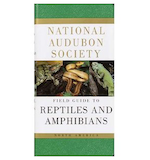
It's always a thrill to find something you've never found before while herping (a "lifer"), and a field guide will help you identify the species, it's range, habitat, breeding habits, and general commentary. It's really fun to page through the guide, even when you're not herping.
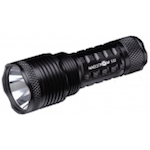
Night herping can be a lot of fun, but without the right flashlight, things become considerably more challenging. You want something small with a strong light beam, rugged and corrosive-resistant construction (aluminum), and a battery that lasts. It's really that simple, and plenty of products fit the bill. As of June 2011, I use a Maelstrom S12 LED, which provides 800 lumens for 1.5 hours, or 120 lumens for 13 hours, on a lithium ion battery. It's a work of art on so many levels, and I really enjoy using it.
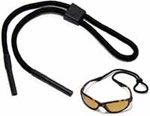
Shades are a must on sunny days, but in my herping experience, the key is using a lanyard. I can't tell you how many times I've knelt down to pick something up, and my sunglasses fall to the ground because I had them on top of my head, or hanging from my collar. A lanyard keeps them from going anywhere, and I can't tell you how much I appreciate mine.
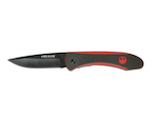
Knives are useful for a variety of reasons while herping, although right now you're thinking to yourself, "I don't think I'd ever really need one." Trust me, you'll be surprised how often you use it. I have a collapsible Ruger that has worked well for me, but just about any type will get the job done. Whether you're cutting nuisance vines, removing burrs or caked-on mud, cutting monofilament for a spur-of-the-moment lizard noose, or defending yourself against a bear (good luck), a knife should have a place in your herping toolbox.
Field Herping Main Menu